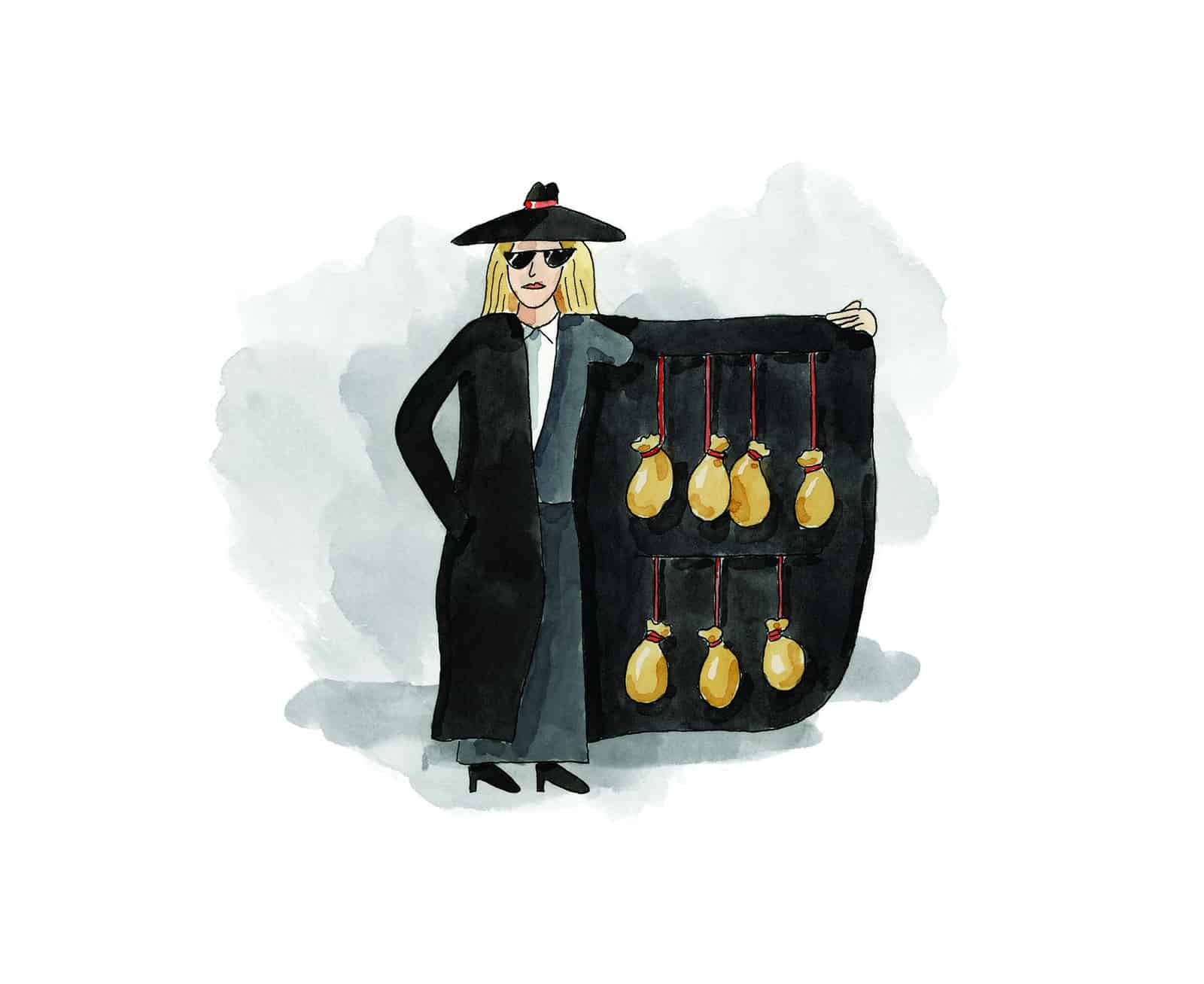
Sense memories are an extraordinary phenomenon: certain sights, sounds, tastes, and smells can instantly summon emotions from moments long ago. For me, homemade Italian food brings my childhood to life—the steam rising up from a plate of just-cooked pasta conjures bustling Sunday dinners at my grandparents’ Brooklyn home, while seafood platters remind me of Christmas Eve feasts filled with excitement. Slicing caciocavallo cheese, however, surpasses them all in terms of evoking vivid memories. As soon as I draw my knife through the pale, golden rind of the gourd-shaped delicacy, I am transported back to the 1970s, my early days as an international cheese smuggler.
Wait…I can explain.
When my paternal grandparents and their siblings emigrated from Italy in 1920, most of them settled in Ontario, Canada. My grandfather, however, had secured a job as a tailor in New York City, so my dad and his parents headed for Ellis Island instead. Being so far away from their close-knit extended family wasn’t easy, so they collectively vowed to visit one another every few years.
Although my grandparents fully embraced the American way of life, they were also committed to preserving their Italian traditions. My father’s parents were born and raised in Monteleone di Puglia, a village in southern Italy known for its caciocavallo cheese. (The hamlet still hosts the oldest—and most well-attended—caciocavallo festival in the world.) A staple in every Monteleone resident’s home, even moving an ocean away would not stop my Nonna from having a steady supply of caciocavallo on hand.
There was just one problem: Although several cheesemakers from their hometown set up shop in Canada, my grandparents couldn’t find their beloved caciocavallo stateside. The only way to ensure our family had plenty of caciocavallo in the pantry was to smuggle it across the border.
Technically, it isn’t illegal to bring cheese into the US from Canada—as long as it’s for personal use—but you’re supposed to declare it at the border. That’s where things got a little dicey for us. While our caciocavallo stash was certainly not for resale, the sheer quantity my Nonna insisted upon probably would have gotten our cheese haul seized had we tried to declare it. So, we didn’t.
Instead, we hid the massive mesh bags under blankets in the trunk, stacked our luggage precariously on top of it, and kept our fingers crossed that the aroma wouldn’t waft out until after we made it back to the States. Even now, one heavenly whiff of the buttery cheese conjures up the pangs of nervous fear that struck as we approached the guard booth. Although I never snitched about the secret stash, there was one close call: When I was around 10 years old, I dozed off before we got to the border, and as per policy, the agent insisted I be awakened to respond to the mandatory questions. My parents feared that I would forget “the script” in my sleepy stupor, but I responded like a champ: “Yes, I’m American. We visited family. We didn’t buy anything.”
Luckily, border agents never did search our car and cart my father off to Cheese Smuggler’s Prison. Instead, upon returning from the 10-hour trip, we got to see Nonna’s face light up as we peeled back the oil-stained blankets to reveal her transported treasures.
These days, I’ve been able to carry on Nonna’s legacy of always having caciocavallo on hand—minus the harrowing trips across the Canadian border—thanks to an Italian shop just a few miles from my New Jersey home. Nevertheless, every time I see those bells of cheese hanging from the rafters in my basement, I still feel like a bit of an outlaw.
Illustrated by Tom Bingham.



